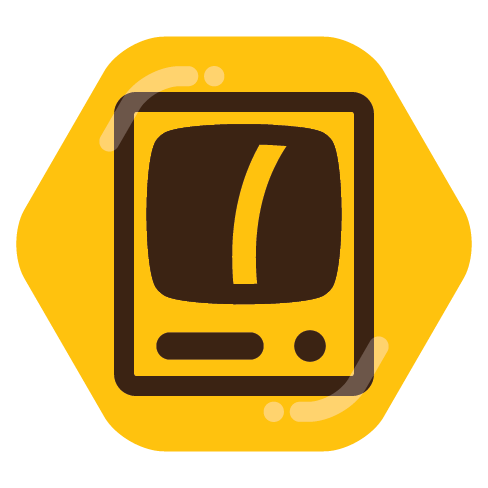

CTRL+R to search previous commands can help cut down on the number of times you have to scroll up!


CTRL+R to search previous commands can help cut down on the number of times you have to scroll up!


Mozilla’s “least to most creepy” ranking is the best resource I’ve found so far:
https://foundation.mozilla.org/en/privacynotincluded/categories/cars/
I mean, if a car doesn’t see a cyclist until the last moment, swerves to avoid it, and hits something else, the cyclist being there created a dangerous situation for the driver.
Even just considering a driver hitting a cyclist, the driver still has to live with that outcome for the rest of their life. Unless your expectation is that the driver is a psychopath who only cares about the condition of their vehicle, which I suppose is a possibility.


When I had my homelab services exposed to the broader web, I enjoyed using Authelia with NGINX. It supported MFA and worked well enough.
That said, I HIGHLY suggest you expose as few of your home systems to the web as possible. Ideally, I would set up a VPN like WireGuard or OpenVPN and use that to connect into your LAN while on the go.
The more of your home network you expose to the web, the bigger your attack surface. If you can just turn on a VPN that already has strong authentication like asymmetric key pairs, you significantly reduce the ways someone can break into your home network while making as many (or few) of your home services available through that VPN as you want.


Is anyone proposing both?
This feels like a publicity stunt at best. Why de-extinct something at all, especially something with no current ecological niche?


Respectfully, an article from four years ago that I cannot read in full without creating an account, which seems to just reference a calculator from FT that is over a decade old at this point (whose sources I also cannot seem to find) doesn’t impress me. Do you have anything more recent, preferably that sites sources, that you can share? I’m genuinely interested in what data is actually worth


Honest question:
If you feel these tools are essential and there are no other options (not sure I agree, but that seems to be the argument you were making; let me know if I am wrong), what is the alternative?
These things take money to keep the infrastructure running, pay staff, patch security vulnerabilities, and bring new features for those same communities to use. And they are also a public company, which means they have a legal responsibility to return money to shareholders.
I’m not defending Meta, I refuse to use their platforms and will not be buying any of their hardware. But if it takes money to keep the lights on (at a minimum), how does offering ads or a subscription equate to a false choice?


I also feel many don’t understand the full extent, either. They’re used to using fairly secure devices in their everyday life (often not realizing how much the software they install is also spying on them), so why wouldn’t these IoT things also be secure?
In my experience, it’s all very vague and ethereal until the risks are highlighted for them. “So what if Google can read all of my emails? What could they possibly do with that information, anyway; why should I care?” is an example of a portion of a real conversation I’ve had.


Thanks for the reminder to donate to Wikipedia!
The original “clicker” remotes were really neat tech! The way it worked unfortunately limited the number of buttons you could have, but still ingenious.
https://www.theverge.com/23810061/zenith-space-command-remote-control-button-of-the-month


Do you own another Apple device from which you could remove your phone from your account (instead of using the store’s phone)?


Hey, that’s totally fair and I am definitely of a similar mindset when it comes to reducing e-waste.
Do you have any significant coding or hardware skills?


To add, I found a thread of someone attempting to find use in the same router. They seemed to have made some minimal progress over the last year, but it doesn’t appear they have anything functional yet. Seems the processor has little known about it, and there is precious little storage onboard.


I guess my first question would be: do you have a need that device can fill, or are you looking to take on a project for some other reason (education, boredom, etc.)?
I honestly don’t see to what great use a router (and modem) that was discontinued a decade ago can be put that couldn’t be accomplished with less complication and less power draw by using a modern device. I’m not trying to rain on your parade, but knowing nothing else about your situation I don’t know that I can see any utility in a device like that anymore.
That was a fun read, thank you.
I honestly wasn’t super familiar with WebView until you asked!
It looks like WebView is a stripped-down browser, more than anything else. It can leverage different rendering engines depending on the platform, and on Android it looks like it leverages Blink just like Chrome.


I hear you, and fair enough, but I think the fact that none of these gaming-specific phones has physical controls like you described built in speaks to how impractical that ask is.
And I think it’s important to note: there’s weren’t just powerful phones (in fact, many of them seemed to get bested by other phones in more benchmarks than they won), they were specifically marketed and sold as gaming phones; that was the specific niche that Asus, Lenovo, Razer, and others all sought to fill. Despite that, and despite basically all those companies having a ton of general experience building gaming hardware of one sort or another, none of them thought it was a good idea to include physical input methods on-device. They pretty much all have accessories that turn it into something looking akin to a Switch or DS, but none had them baked into the actual phone.
And I honestly think that makes a lot of sense. Thumb sticks aren’t super pocket-able, and I feel like even if they could be made to fit into a pocket, sliding them in and out of bags and pants over and over would make them fail faster. And while A/B/X/Y buttons might be more reasonable on that pocket-ability metric, do you want to smush them (or thumb sticks, for that matter) against your face while you take a call?
While current controller-esque buttons and thumb sticks remain the primary input method for games, I really don’t see gaming phones including those input methods within their physical form factor. It might be a limitation of my imagination, but I just can’t envision how one would make that work (and it seems I am not alone in that).


I mean, Asus and nubia have been making a gaming-specific phone for many generations now. Razer even gave it a try back in 2018, but I don’t think they released any follow up devices.
Lenovo also made a couple devices, but announced earlier this year that they’d be discontinuing their gaming phone business.
There seems to be a fan base and market for gaming-specific phones, but given Lenovo and Razer got out of the game and the fact that you haven’t seemed to have heard of any of these devices/product lines: my guess is that they are super niche.
I’m not getting this, at least not yet.
Maybe it’s because I run Pi-hole; I know it filters out a TON of Roku’s telemetry and other traffic. Might be worth setting up Pi-hole on your network and see if stuff like that goes away?